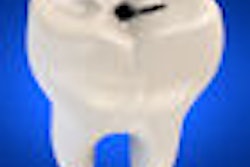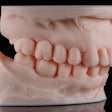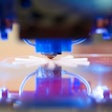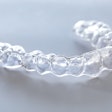Thermal imaging appears able to discriminate between healthy and carious enamel in vitro, according to a study in the Journal of Dentistry (July 1, 2010).
Researchers from the University of Manchester used infrared imaging to study whether thermal changes associated with dehydration would be useful in detecting and quantifying early tooth decay on occlusal surfaces.
A total of 72 sites on 25 human teeth with various degrees of natural demineralization were analyzed. Continuous evaporation of water inside the pores by pressurized air-drying produced a thermodynamic response on the tooth surface, the researchers noted. The temporal profile of the temperature depends on the amount of water at each position, so they examined this in relation to the degree of porosity and the lesion severity.
Using this approach, the researchers found a detection sensitivity of 77% and specificity of 87% for areas that were sound or had a histological E1 lesion, 87% sensitivity and 72% specificity for areas that had either an E2 or enamel-dentin junction lesion, and 58% sensitivity and 83% specificity for areas with a lesion reaching the dentin.
"Thermal imaging shows the ability to discriminate, in-vitro, between a) either areas that are sound or with a lesion on the outer half of the enamel and b) areas with a lesion extending to the middle of the enamel or deeper," the researchers wrote.
However, variations in the temperature of an open mouth and humidity due to respiration could challenge the ability of using this technique in vivo, they added.
Copyright © 2010 DrBicuspid.com



















